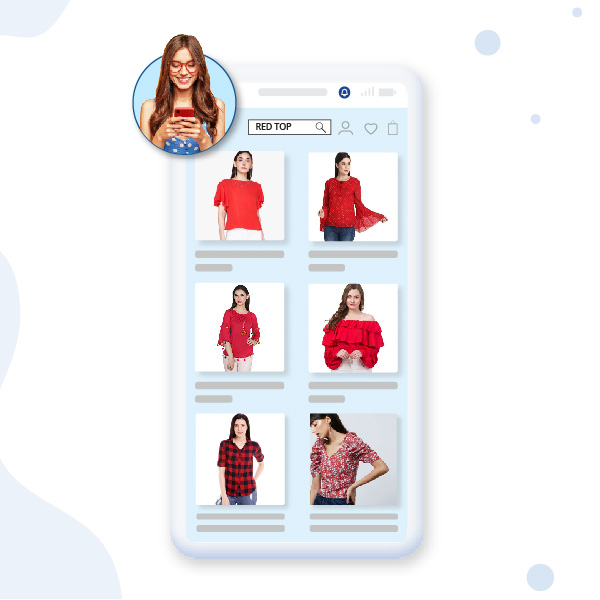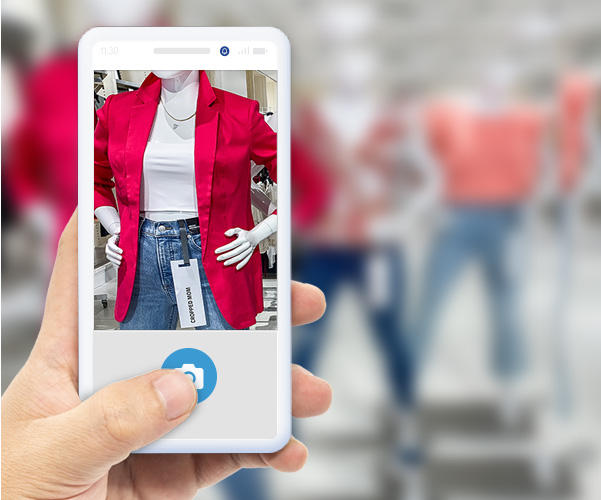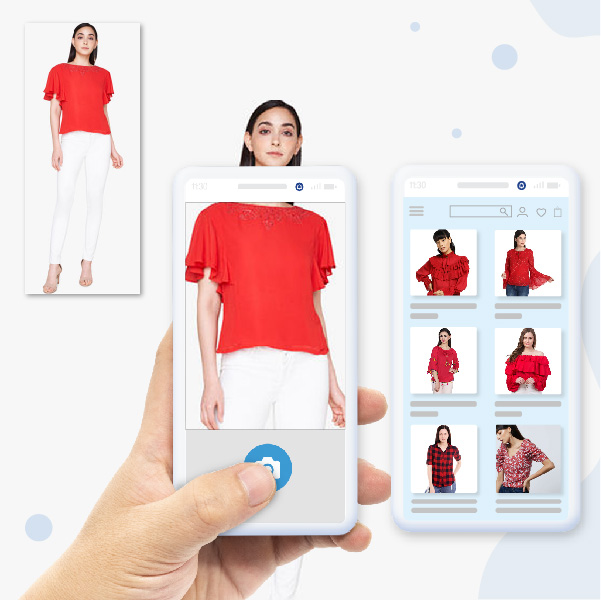Amazon consistently delivers an exceptional customer experience. Many of us have experienced this firsthand, particularly with their search functionality. It goes far beyond simple keyword matching. Even without a specific search query, Amazon often suggests products tailored to our past behavior and preferences. This is the power of AI-driven hyper-personalization, a strategy that anticipates customer needs before they’re even fully articulated. This level of personalization isn’t unique to Amazon. Other industry giants, like Netflix and Etsy, also leverage sophisticated search personalization to create highly engaging and satisfying customer journeys. We’ll delve into how these brands utilize this technique and other innovative marketing strategies to achieve remarkable success.
In today’s competitive landscape, generic marketing campaigns simply don’t cut it. Marketing informed by rich customer data achieves a level of personalization that truly resonates, effectively persuading customers with the right message at the right time. Two of the most impactful trends in e-commerce, search personalization, and visual search, are at the forefront of this movement. When implemented strategically, these technologies empower customers to discover relevant products faster. The result? Increased conversion rates, boosted revenue, and, most importantly, exceptional customer experiences that build lasting loyalty. This blog post will explore how businesses can unlock their marketing success by drawing inspiration from the strategies employed by industry giants like Amazon, Netflix, and Etsy.
Search Personalization
Search personalization unearths appropriate products for each unique customer, removing the need to scroll through pages of irrelevant content before making a purchase.
What Is Search Personalization?
Retailers already know that personalization is essential: our research revealed that 49% of brands send personalized emails, 38% personalize the homepage, and 48% offer personalized search results. Yet while 62% of retailers claim to have improved their personalized shopping experience, a worrying 45% of customers have not seen any improvement.
With search personalization, every single user on your website will see different results after performing a search. It uses several factors like location, gender, previous site behavior (such as clicks, viewed products, and purchases), and other data to recommend the most relevant products for an individual.

Two users that search “red shirt” may see entirely different products, as each search result is customized and displays items that the customer is likely to enjoy at the top of the page. This is a one-stop solution that saves time for customers, as they can instantly find something appealing without scrolling through pages of products.
Creating a Better Experience With Personalized Search
Customers want an experience that is truly helpful and makes the buying process as streamlined as possible. In fact, according to our research, they’re 77% more likely to stay longer on a personalized website as it’s more engaging and exciting.
One of the key market trends in this area is personalized search. While only 48% of retailers are offering personalized search, 35% of customers are already demanding it, our research has found. Retailers must get behind this trend or risk losing customers to competitors.
It’s not surprising that customers don’t recall a neutral search experience: they remember only the outstanding and exceptionally bad. Stand out for the right reasons and retain your users by creating positive experiences with personalized search.

With personalized search, it will be fast and easy for customers to find what they want. They don’t even have to think: the site knows their preferences and brings those items straight to the forefront. It saves time since users don’t have to scroll through items that aren’t their style, are for the wrong gender, or are out of their budget.
Netflix’s Search Personalization
The reason Netflix has been able to crack the market is that its smart recommendation system is driven by artificial intelligence. As per Business Insider, Netflix drives 75% of its viewership through Personalized recommendations.
The Netflix Search experience delivers top results based on a number of factors, including the actions of other members who have entered the same or similar queries, our prediction of what you’d like to enjoy on Netflix, and others. To personalize experiences Netflix includes factors like:
- the time of day you’re enjoying Netflix,
- the languages you prefer
- the devices you are enjoying Netflix on, and
- Based on the viewing duration of a Netflix title.
Let’s understand how Netflix’s search personalization works:
1. Keyword-Based Matching
- When a user types a search query, Netflix first retrieves content that matches the title, genre, cast, director, or descriptions.
- It also suggests related keywords, genres, and trending searches.
2. Personalization & Recommendation Engine
- Viewing History: The search results prioritize content similar to what the user has previously watched.
- User Preferences: Netflix analyzes genres, actors, and directors frequently watched by the user.
- Completion Rate: Shows and movies that were fully watched (not abandoned midway) are weighted more.
- Thumbs Up/Down Ratings: User feedback helps refine the recommendations in search results.
Without actually typing full words Netflix recommends the user series based on past watchlist.
3. Popularity & Trends
- Netflix’s search considers global and regional trends.
- If a movie or show is trending, it may appear higher in search results, even if it isn’t a perfect match.
- Popular content in a specific region is prioritized for users in that location.
4. Context-Aware Search Results
- Netflix may adjust results based on:
- Time of Day (e.g., family-friendly content in the morning, darker content at night).
- Device Type (e.g., shorter content may be prioritized on mobile).
- User Profiles (each profile has a unique recommendation algorithm).
5. Genre & Tag-Based Search
- Netflix tags content with highly detailed metadata (e.g., “dark comedy,” “crime thriller,” “feel-good drama”).
- The search engine can return results based on related genres, even if the exact keyword isn’t present.
Netflix uses tags like ‘dark comedy’ to curate a personalized experience, making it easy for fans of the genre to discover new shows and movies.
6. Autocomplete & Suggestive Search
- Netflix provides predictive search suggestions while typing.
- These suggestions are personalized based on the user’s watching habits.
7. Hidden & Niche Categories
- Netflix has thousands of micro-genres (e.g., “Romantic Foreign Movies,” “Dark Sci-Fi Dramas”).
- Search sometimes reveals hidden categories that aren’t directly visible in the main UI.
Etsy’s Search Personalization
In a recent interview, Etsy CEO Josh Silverman stated, “What we’re trying to do is create experiences that allow people who aren’t familiar with merchandise terminology, who don’t know how to effectively use our search engine, to have a really fun and engaging experience and be able to, in a sense, immerse themselves in the joy of all the unique items Etsy offers.”
Etsy understands the value of personalized customer experiences. They’ve publicly stated that they collect data on items and images customers hover over, quickly swipe past, or enlarge. This helps them understand buyer browsing behavior, predict preferences, and deliver more personalized experiences.
Etsy is further enhancing its search personalization with a completely revamped navigation system designed to improve product discoverability and inspiration. By making their services more browsable and engaging, they’ll be able to gather significantly more data about buyer interests, inclinations, and habits, both at an individual and aggregate level.
Let’s understand how Etsy’s search personalization works:
1. Keyword Matching
- Etsy’s search engine first looks for listings that match the keywords a user enters.
- Titles, tags, categories, and attributes are all taken into account.
2. Listing Quality Score
- Etsy tracks how well a listing performs over time.
- If a listing gets a lot of clicks, favorites, or purchases, it’s considered high quality and is ranked higher.
3. Customer Behavior & Personalization
- Etsy customizes search results based on a user’s past interactions.
- Factors like past purchases, items a user has favored, and what they’ve clicked on influence what appears in search results.
- The goal is to show listings that are more likely to convert into sales.
Generic search results for a new user on the Etsy website
A user who recently interacted with epoxy resin items gets the above results for the lamp search.
Source: Etsy.com
4. Shop & Seller Score
- Shops with strong customer service, good reviews, and active engagement are more likely to rank higher in search results.
- Factors include shipping speed, responsiveness, and policy completeness.
5. Location-Based Personalization
- For some categories, Etsy may prioritize sellers closer to the buyer to optimize shipping times.
- This is more relevant for products with high shipping costs or long delivery times.
6. Freshness of Listings
- Newer listings might get a temporary boost to test how well they perform.
- Frequent updates to listings (like tweaking titles, tags, or images) may help, but constant changes aren’t always necessary.
7. Context-Specific Ranking
- Search results may adjust based on current trends, seasonal popularity, and Etsy’s promotional pushes.
- Personalized recommendations appear based on browsing and shopping behavior.
Search results for a user looking for dresses in the summer season on Etsy.com.
Source: Etsy.com
Visual search
Visual search is another powerful tool that creates a smoother shopping experience as it instantly showcases what the customer is looking for.
What is Visual Search?
Visual search is an even newer and hotter trend than search personalization: only 8% of retailers have image search on their eCommerce websites, yet the global visual search market is expected to reach approximately USD 10.9 billion by 2025 as per MarketsandMarkets report.
Visual search allows customers to discover products by uploading a photo rather than describing it with keywords, as in a standard text-based search. Users could snap a picture of an item their friend is wearing or a product in a store, then use visual search to find items as similar as possible.

Pinterest first popularized visual search, and brands like Amazon and ASOS quickly jumped on board. The latter supports over 850 brands and 85,000 products in their visual search, a compelling customer resource.
Helping customers with visual search
Users want visual search for the same reason they want personalized search: ease and speed.
Our research revealed that 71% of online shoppers use the search function frequently, and 27% always use it. These users don’t want to waste time browsing. They know what they’re looking for, and if you can help them find it, you’re more likely to win their business.
Visual search makes it so easy to find a product. It’s a truly seamless customer experience. There’s virtually no friction, as users can go from seeing something in the ‘real world’ to purchasing it online in just a couple of clicks. Generation Z, in particular, is hungry for this kind of speed.

Text-based search is difficult because users might not use or even know the correct words to describe what they’re looking for. Visual search uses AI to match and find products, and therefore gives better results.
Finally, it’s also easy to shop for other products with visual search. Customers can discover different items, choose the best-priced option, or locate a similar product if a favorite is out of stock.
According to our study, 59% of retailers plan to focus on visual search in the coming months. 40% of customers are already waiting for it, so all retailers must get on board to meet customer’s ever-changing expectations and provide the experience they are seeking.
Combining personalized and visual search
All personalization tools can be used in tandem to provide a superior customer experience.
For example, you could combine personalized and visual searches to give individual recommendations to each customer, even if they upload a photo of the same product.
When adding new functionality to your online store, think about your customers’ expectations and develop new and exciting ways to meet those expectations. This will be crucial to stay competitive and successful in 2025 and beyond.
Unlock the power of a better search experience
Personalization is becoming one of the most crucial trends in eCommerce. While it can improve retention, increase page views, and boost revenue, its most important benefit is creating a better shopping experience for customers.
To truly scale your marketing efforts, consider leveraging a robust ecommerce marketing platform. Book a demo today to discover how it can transform your business.
With personalized search and visual search in hand, retailers will wow their users by recommending products that they’ll love every time.
 Holiday Sales Are Won Now — Grab the 2025 Holiday Marketing Guide to Unlock More Revenue.
Holiday Sales Are Won Now — Grab the 2025 Holiday Marketing Guide to Unlock More Revenue. 








